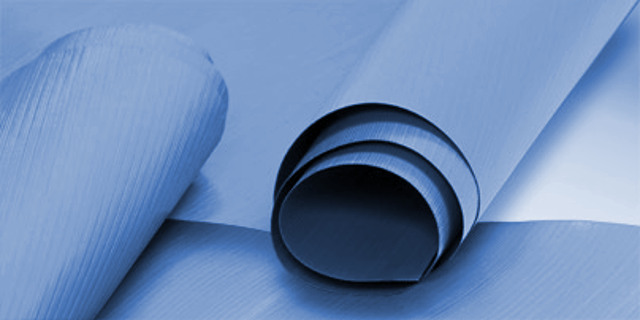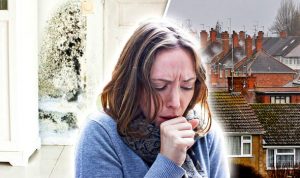Vapor barriers, or vapor diffusion retarders should be part of a moisture control strategy for any building. A vapor barrier or diffusion retarder is a material that reduces the rate at which water vapor can move through a material. The older term “vapor barrier” is still widely used even though “vapor diffusion retarder” is more accurate.
The ability of a material to retard the diffusion of water vapor is measured in units known as “perms” or permeability. The International Residential Code describes three classes of water vapor retarders:
Class I vapor retarders (0.1 perms or less):
- Glass
- Sheet metal
- Polyethylene sheet
- Rubber membrane
Class II vapor retarders (greater than 0.1 perms and less than or equal to 1.0 perms):
- Unfaced expanded or extruded polystyrene
- 30 pound asphalt coated paper
- Plywood
- Bitumen coated kraft paper
Class III vapor retarders (greater than 1.0 perms and less than or equal to 10 perms):
- Gypsum board
- Fiberglass insulation (unfaced)
- Cellulose insulation
- Board lumber
- Concrete block
- Brick
- 15-pound asphalt coated paper
- House wrap
Vapor diffusion retarders can help control moisture in:
- Basements
- Ceilings
- Crawlspaces
- Floors
- Slab-on-grade foundations
- Walls
Effective moisture control in these areas and throughout a home must also include air-sealing gaps in the structure, not just the use of a vapor diffusion retarder. How, where, and whether you need a vapor diffusion retarder depends on the climate and the construction of your home.
Types of Vapor Barriers
Vapor diffusion retarders are typically available as membranes or coatings. Membranes are generally thin, flexible materials, but also include thicker sheet materials sometimes called “structural” vapor diffusion retarders. Materials such as rigid foam insulation, reinforced plastics, aluminum, and stainless steel are relatively resistant to water vapor diffusion. These types of vapor diffusion retarders are usually mechanically fastened and sealed at the joints.
Thinner membrane types come in rolls or as integral parts of building materials. Common examples include polyethylene sheeting and aluminum- or paper-faced fiberglass roll insulation. Another type is foil-backed wallboard. Most paint-like coatings also retard vapor diffusion.
Installing vapor barriers for new construction.
In mild climates, materials like painted gypsum wallboard and plaster wall coatings may be enough to impede moisture diffusion. In more extreme climates, higher-perm vapor diffusion retarders are advisable for new construction. The perform best when installed closest to the warm side of a structural assembly – toward the interior of the building in cold climates and toward the exterior in hot/wet climates.
A vapor barrier installation should be continuous and as close to perfect as possible. This is especially important in very cold climates and in hot and humid climates. Be sure to completely seal any tears, openings, or punctures that may occur during construction. Cover all appropriate services or you risk moist air condensing within the cavity, which could lead to dampened insulation. The thermal resistance of wet insulation is dramatically decreases, and prolonged wet conditions will encourage mold and wood rot.
Installing vapor diffusion retarders in existing homes
Except for extensive remodeling projects, it’s difficult to add materials like sheet plastic as a vapor diffusion retarder to an existing home. Obtaining an energy audit and thoroughly sealing any leaks it reveals is a very effective strategy for slowing moisture movement in and out of your home.
Your home may not need a more effective vapor barrier than the numerous layers of paint on its walls and ceilings unless you live in extreme northern climates. If the perm rating of the paint is not indicated on the label, find the paint formula. The paint formula would usually indicate the percent of pigment. To be a good vapor diffusion retarder, it should consist of a relatively high percent of solids and thickness in application. Glossy paints are generally more effective than latex paint. When in doubt, apply more coats of paint. It is best to use paint labeled as a vapor diffusion retarder ad follow the instructions for applying it.
Combination air barrier / vapor barriers
An air barriers/vapor diffusion retarders are generally placed around the perimeter of the building just under the exterior finish, or they may actually be the exterior finish. The key to making them work effectively is to permanently and carefully seal all of the seams and penetrations, including around windows, doors, electrical outlets, plumbing stacks, and vent fans.
In many cases, air barriers/vapor diffusion retarders consist of one or more of the following materials:
- Polyethylene plastic sheets
- Builder’s foil
- Foam board insulation
- Other exterior sheathings.
Missed gaps of any size not only increase energy use, but also increase the risk of moisture damage to the house, especially during the cooling season.An air barrier/vapor diffusion retarder should also be carefully inspected after installation before other work covers it. If small holes are found, you can repair them with caulk or polyethylene or foil tape. Areas with larger holes or tears should be removed and replaced. Patches should always be large enough to cover the damage and overlap any wood framing


